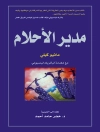Take a satirical scamper through organizational life in the midstof changing times, brought to you by master storyteller andformer World Bank executive Steve Denning. With wisdom and ahealthy dose of wit, Denning introduces a cast of furry characterswho together learn the fine art of change through storytelling intheir quest to overcome obstacles, generate enthusiasm andteamwork, share knowledge, and ultimately lead their company into anew era of success and significance. Through the stories of Squirrel Inc., readers will learn that the ability to tellthe right story at the right time can determine the outcome of anymajor change effort. In each chapter Denning’s squirrels learn touse storytelling to address leadership challenges:
* How to bring about change
* How to communicate who you are
* How to transmit values
* How to foster collaboration
* How to stop rumors
* How to share knowledge
* How to lead your organization into the future
Jadual kandungan
Preface xiii
The author explains the purpose of the book and the process bywhich it came to be written.
Part One
1 Squirrel Inc.: How to Craft a Story to Spark Organizational Change 3
Diana is an up-and-coming executive at Squirrel Inc., anorganization in decline. She seeks guidance from a bartender on howto persuade the organization to change. She learns, in nine steps, how to craft a story to communicate a complex idea and sparkaction.
2 Diana Tells Her Story: How to Perform the Story to Spark Change 25
After initial success with her story at Squirrel Inc., Dianareturns to seek further guidance from the bartender on how toenhance the performance of her story.
Part Two
3 Save Squirrel Inc. Night: Seven Types of Organizational Storytelling 41
After the success of her story with the managing committee of Squirrel Inc., Diana joins employees to explore other ways in whichstorytelling can help address the challenges the firm isfacing.
4 Whyse’s Story: How to Use Storytelling to Reveal Who You Are and Build Trust 49
Whyse shows how storytelling can enhance communication incorporate environments by communicating who you are.
5 Hester’s Story: How to Use Storytelling to Get Individualsto Work Together 59
Hester shows how storytelling can be used to get individualsworking together. She presents five steps to craft a story fornurturing a community.
6 Mark’s Story: How to Use Storytelling to Transmit Values69
Mark shows how stories that are told and retold in aorganization, particularly about the organization’s leaders, transmit the organization’s values.
7 Mocha’s Story: How to Use Storytelling to Tame the Grapevine 79
Mocha shows how humor can be used to harness the power of theinformal network of communication in an organization and to tamethe grapevine by neutralizing rumors and bad news.
8 Howe’s Story: How to Use Storytelling to Share Knowledge89
Howe shows how the sharing of knowledge takes place through aparticular kind of narrative.
9 Sandra’s Story: How to Use Storytelling to Create a Future101
Sandra shows how future stories–visions, business models, scenarios–help organizations move into the future. Meanwhile Howe reveals some unexpected developments within Squirrel Inc.
10 Howe Upsets the Acorns: How Individuals and Organizations React to Change 115
The discussion in the bar now turns to what will happen next at Squirrel Inc. Will the old way of doing business triumph? Or will Squirrel Inc. carry through with the change? The characters explorethese and other possibilities.
Part Three
11 The Journey of a Leader: Staying Alive Through the Dangersof Leadership 127
As the continuing tale of Squirrel Inc. unfolds, the charactersencounter a variety of surprises and Diana goes on a journey.
12 The Return to Squirrel Inc.: Living the Story as Well as Telling It 143
We learn the impact of storytelling on Squirrel Inc. and on Diana herself.
Seven High-Value Forms of Organizational Storytelling 150
The nature, form, and purpose of seven high-value kinds oforganizational storytelling are compared, in a table.
Notes 155
Further reading 169
Write to the author 177
Acknowledgments 179
About the author 181
Mengenai Pengarang
STEPHEN DENNING is a leading writer who consults with organizations in the U.S., Europe, Asia, and Australia on leadership, management, innovation, and business narrative. In 2009, he was a visiting fellow at All Souls College, Oxford University, U.K. He is the author of The Secret Language of Leadership–a Financial Times selection in Best Books of 2007, and a 800-CEO-READ selection as the best book on leadership in 2007.












